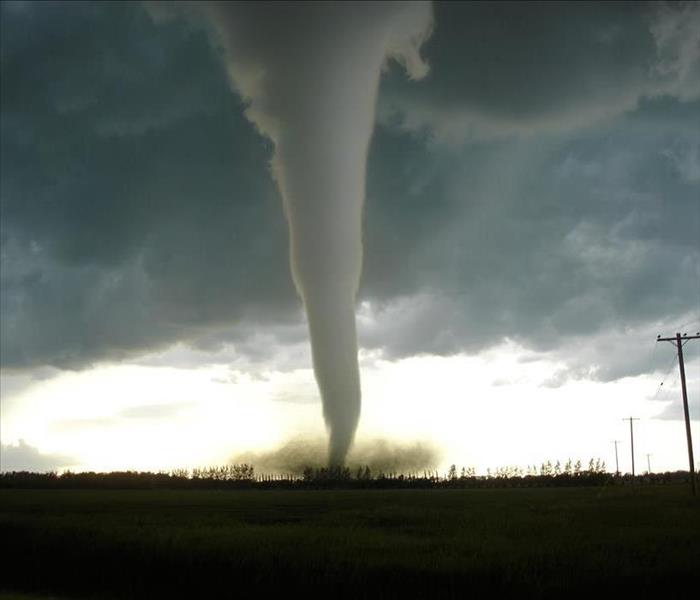Preparing for Tornado Season
3/26/2021 (Permalink)
This page explains what actions to take when you receive a tornado watch or warning alert from the National Weather Service for your local area and what to do before, during, and after a tornado.
Know your risk
What
A tornado is a violently rotating column of air that extends from a thunderstorm to the ground and is often—although not always—visible as a funnel cloud. Lightning and hail are common in thunderstorms that produce tornadoes. Tornadoes cause extensive damage to structures and disrupt transportation, power, water, gas, communications, and other services in its direct path and in neighboring areas. Related thunderstorms can cause heavy rains, flash flooding, and hail
Where
About 1,200 tornadoes hit the United States every year and every state is at risk. Most tornadoes in the United States occur east of the Rocky Mountains with concentrations in the central and southern plains, the Gulf Coast and Florida.
When
Tornadoes can strike in any season, but occur most often in the spring and summer months. They can occur at all hours of the day and night, but are most likely to occur between 3 p.m. and 9 p.m.
Before a Tornado
Identify safe rooms built to FEMA criteria or ICC500 storm shelters or other potential protective locations in sturdy buildings near your home, work, and other locations you frequent so you have a plan for where you will go quickly for safety when there is a Warning or an approaching tornado.
For schools, malls, and other buildings with long-span roofs or open space plans, or many occupants, ask the building manager to identify the best available refuge.
Build an emergency kit and make a family communications plan.
Listen to NOAA Weather Radio or to commercial radio or television newscasts for the latest information. In any emergency, always listen to the instructions given by local emergency management officials.
Be alert to changing weather conditions. Look for approaching storms.
Look for the following danger signs:
Dark, often greenish sky
Large hail
A large, dark, low-lying cloud (particularly if rotating)
Loud roar, similar to a freight train.
If you see approaching storms or any of the danger signs, be prepared to take shelter immediately.
If your home is without power, use flashlights or battery-powered lanterns rather than candles to prevent accidental fires.
Kansas weather can be unpredictable! Be informed & stay safe!
If tragedy strikes remember, SERVPRO of Leavenworth & NW Wyandotte County is always here to help!
913-772-1818

 24/7 Emergency Service
24/7 Emergency Service
